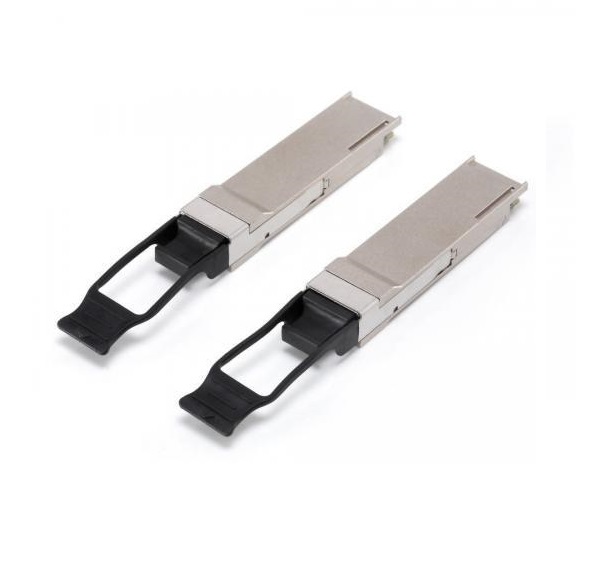- Sales SupportContact Sales
- Call us at: +(86) 15211074652
- Send us a email at: info@zr-fibercable.com
Brief Introduction to QSFP 100G PSM4 Optical Transceiver
Brief Introduction to QSFP 100G PSM4 Optical Transceiver: Enabling High-Speed Data Transmission in Data Centers
The QSFP 100G PSM4 (Parallel Single-Mode 4) optical transceiver module is a key component in high-speed data communication networks, specifically designed for 100 Gigabit Ethernet (100G Ethernet) applications. It utilizes parallel single-mode fiber technology to enable the transmission of data at 100Gbps speeds. In this article, we will provide a comprehensive overview of the QSFP 100G PSM4 optical transceiver module, exploring its features, applications, advantages, and considerations.
Definition and Features:
1.1 Definition:
The QSFP 100G PSM4 optical transceiver module is a compact, hot-pluggable optical module that adheres to the QSFP28 (Quad Small Form-factor Pluggable 28) industry standard. It uses four parallel single-mode fibers to transmit data at a rate of 100Gbps per port.
1.2 Features:
Form factor: The QSFP 100G PSM4 module has a small form factor, enabling high-density deployments and efficient use of rack space in data centers.
Data rate: This module supports a data transmission rate of 100Gbps per port, allowing for high-speed and high-volume data transfer.
Fiber type: The QSFP 100G PSM4 module uses parallel single-mode fibers, typically operating at a wavelength of 1310nm.
Connector type: It is equipped with MPO/MTP connectors, enabling easy and reliable connections with single-mode fiber cables.
Transmission distance: The QSFP 100G PSM4 module supports transmission distances of up to 500 meters, making it suitable for medium-range connectivity within data centers.
Applications:
The QSFP 100G PSM4 optical transceiver module is primarily used in data centers for various high-speed networking applications, including:
Server-to-switch connections: It enables high-speed connectivity between servers and switches, ensuring efficient data flow and low latency.
Intra-rack and inter-rack connections: The module facilitates the interconnection of networking equipment within and between racks, optimizing data center architecture.
High-performance computing (HPC): QSFP 100G PSM4 modules are employed in HPC clusters, supporting fast and reliable data exchange between computing nodes.
Storage area networks (SANs): They play a crucial role in connecting storage devices in SAN environments, ensuring efficient data transfer and storage management.
Advantages:
3.1 High Data Rate:
The QSFP 100G PSM4 module offers a high data rate of 100Gbps per port, meeting the growing demand for high-speed data transmission in data centers. This enables organizations to handle increasing bandwidth requirements and support data-intensive applications.
3.2 Longer Transmission Distance:
Compared to other 100Gbps transceiver modules, the QSFP 100G PSM4 module supports longer transmission distances, up to 500 meters. This allows for flexible connectivity options within data centers, accommodating different physical layouts and inter-rack distances.

3.3 Fiber Optic Compatibility:
The module utilizes parallel single-mode fibers, which are generally less expensive and easier to work with than other fiber types. Single-mode fibers offer lower attenuation and better signal integrity over longer distances, ensuring reliable and high-quality data transmission.
3.4 Scalability and Density:
With its small form factor, the QSFP 100G PSM4 module enables high port density, maximizing the utilization of available rack space. This scalability allows data centers to accommodate a large number of connections, supporting high-capacity networks.
Considerations and Limitations:
4.1 Fiber Type and Compatibility:
When deploying the QSFP 100G PSM4 module, it is essential to use compatible single-mode fiber cables. The module operates at a wavelength of 1310nm, and the fiber cables should be designed for this specific wavelength range to ensure optimal performance.
4.2 Power Consumption:
The QSFP 100G PSM4 module typically consumes more power compared to lower-speed transceiver modules. It is important to consider power requirements and ensure that the networking equipment can provide adequate power supply and cooling for these modules.
4.3 Cost:
Compared to multimode fiber-based modules, the QSFP 100G PSM4 module and associated single-mode fiber cables may be relatively more expensive. Organizations should evaluate their specific requirements and cost constraints when considering this module.
Conclusion:
The QSFP 100G PSM4 optical transceiver module is a crucial component in high-speed data communication networks, enabling efficient data transmission at 100Gbps speeds within data centers. With its high data rate, longer transmission distance, and compatibility with single-mode fiber, it offers advantages in terms of performance, flexibility, and scalability. By understanding the features, applications, advantages, and considerations associated with the QSFP 100G PSM4 module, organizations can make informed decisions when implementing high-performance data communication solutions in their data center environments.
You might be interested in
We use cookies to ensure that we give you the best experience on our website. By clicking on "Accept" or continuing to use this site, you agree to our use of cookies in accordance with our Cookie Policy .You can refuse the use of cookies here.
Accept

